Working together: Why it’s hard and how we can do it
12 minute read
Updated on: 02 Jul 2021
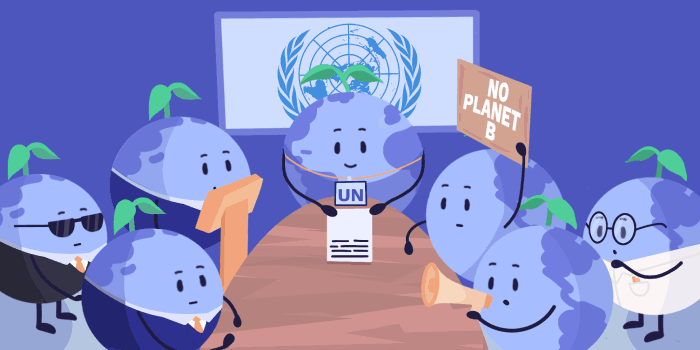
In the past, global politics was focused on international relations, namely the relationships between different countries . Over time, this has changed and now lots of different players are involved
.
In this chapter, we will learn about how all of these different players relate and contribute to global climate politics.
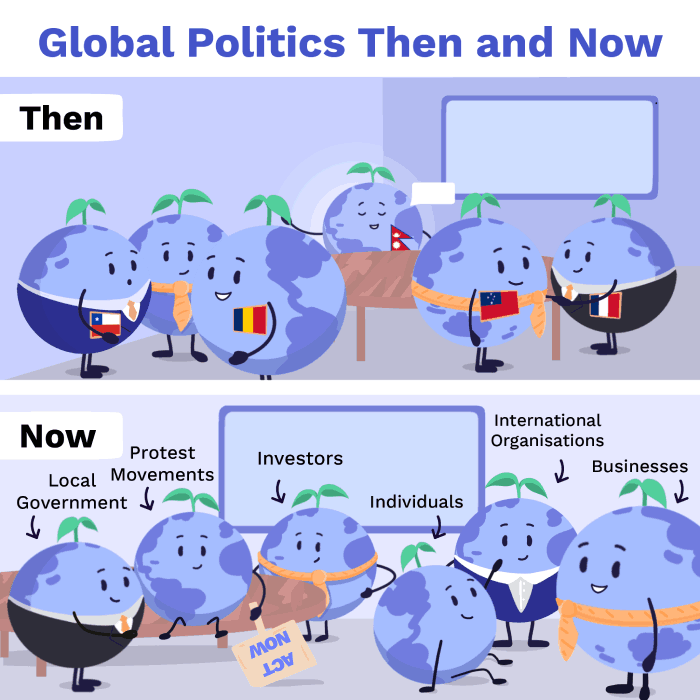
Global politics has changed recently
How do countries influence global climate politics?
At an international level, one way for countries to create international policies and laws is through treaties (written agreements concluded between countries that are governed by international law ). In some cases, countries can sue each other (or initiate compliance procedures) if they do not obey these laws
.
Nations can also create laws and policies that apply in their country - but such domestic measures may also have international impacts. For instance, Chinese businesses that export (send products or services) to high-income countries perform better environmentally because of consumer demand for eco-friendly products in these countries .
As we will learn in the last chapter of this course, countries face various restrictions in their ability to solve climate change using politics; but they are not the only important players in solving climate change !
How do non-state players contribute to global climate politics?
International organisations
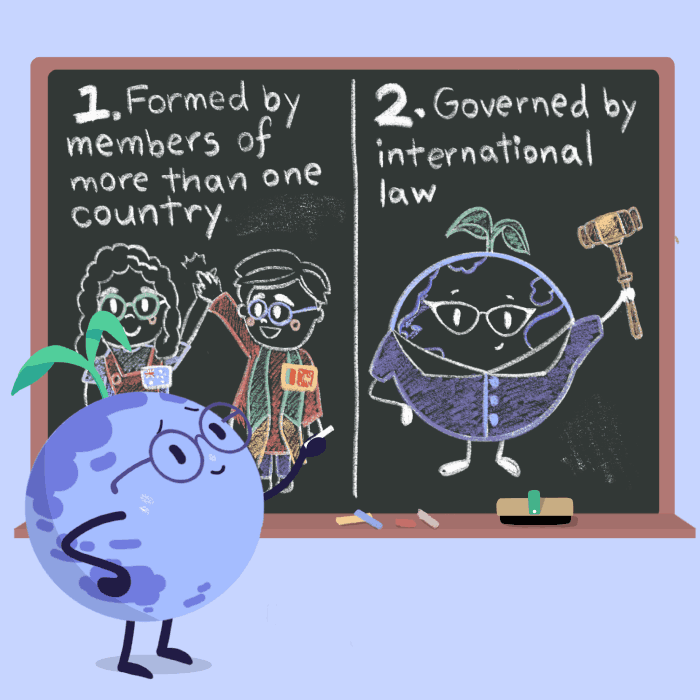
International Organisations
International organisations are institutions formed of members from more than one country and governed by international law (rules that govern relations between countries )
. Examples include the United Nations, the World Health Organisation, and the World Trade Organisation
.
In the context of climate change, an interesting example of an international organisation making a difference is the Alliance of Small Island States (AOSIS), a group of small low-lying island and low-income coastal countries . AOSIS helps its members to work together by pooling resources and amplifying their collective voice in climate negotiations
.
AOSIS was one of the first groups to highlight the dangers posed by greenhouse gas emissions to the international community and has highlighted the threat of rising sea levels . Since 2008, AOSIS has been calling for a global goal to limit warming by 1.5°C. After a hard-fought international compromise, the 2015 Paris Agreement, a key climate change treaty, includes a long-term temperature goal of ‘well below’ 2°C above pre-industrial levels while ‘pursuing efforts’ to limit this to 1.5°C
.
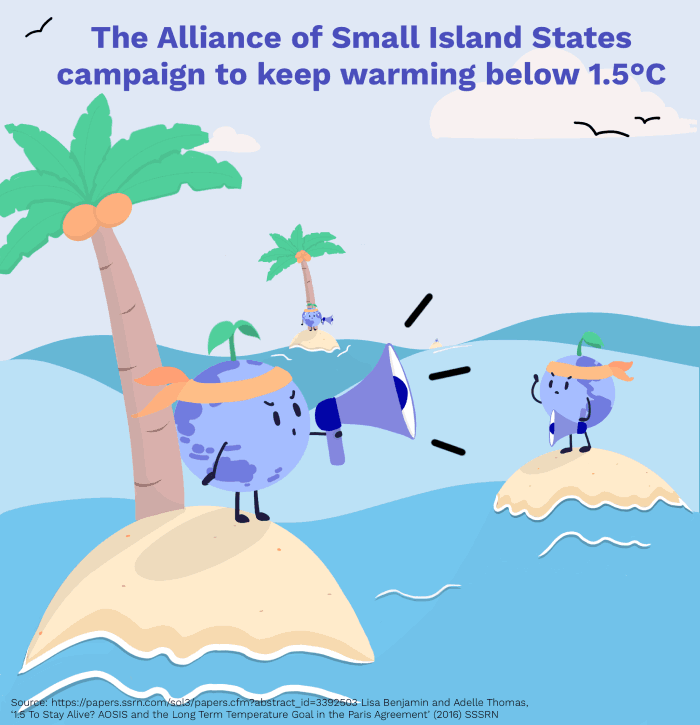
AOSIS’s Campaign for 1.5°C
Non-governmental organisations (NGOs)
NGOs play an important role in the global climate movement.
Although NGOs usually lack a formal decision-making power in international negotiations, this does not stop them from being able to influence international climate change negotiations . NGOs tend to have an influence by using information to persuade others or by coercion (e.g. NGOs might name and shame to influence others)
. NGOs also get involved in protests, rallies, and demonstrations, both inside and outside of negotiating halls
!
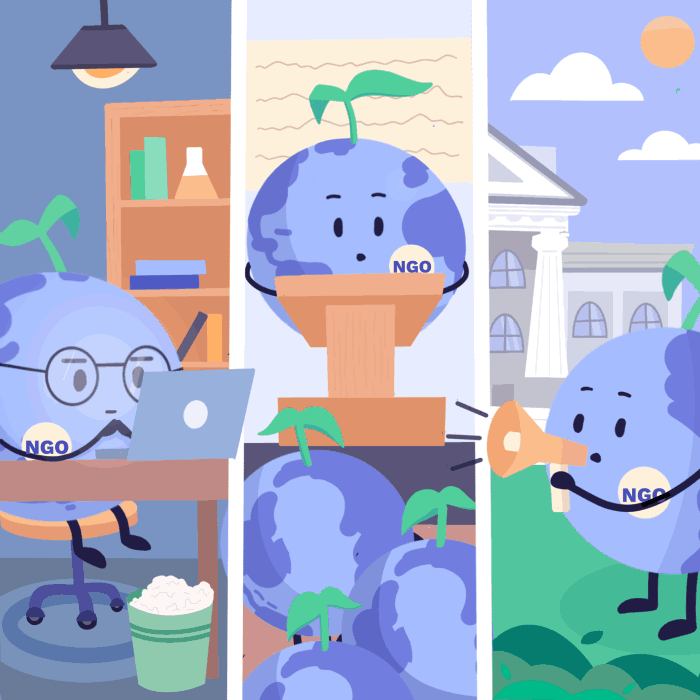
Different contributions that NGOs make to global climate politics
NGOs sometimes work together to achieve their aims. For example, Climate Action Network International (CAN) is a worldwide network of over 1500 NGOs in more than 130 countries that works to generate action from governments to fight the climate crisis . Its members coordinate and exchange information on international, regional, and national climate policies and issues
. CAN is also involved in international climate negotiations
.
The private sector
The private sector is the part of the economy that encompasses for-profit businesses that are not owned or operated by the government . It has both positive and negative influences in addressing climate change.
An industry within the private sector that has a lot of influence over climate change is big oil. Oil companies contribute to greenhouse gas emissions on a massive scale, both from the manufacture of their products and from the products themselves . Not only that, but they also have vast quantities of money to spend on lobbying politicians to push for certain laws that favour the fossil fuel industry
.
One way big oil has had an influence is through advertising. For example, in the four weeks leading up to the US midterm elections in 2018, ExxonMobil led the oil majors and their agents in spending US$2 million on targeted Facebook and Instagram ads promoting the benefits of increased fossil fuel production, as well as supporting successful opposition to several key climate-related ballot initiatives .
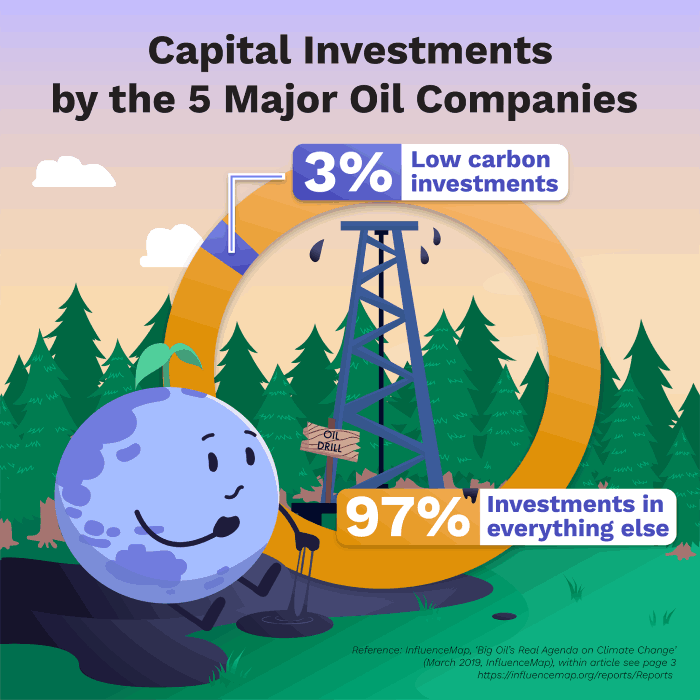
Oil companies are not spending enough on clean energy
To reduce the harmful impacts of lobbying, we need rules to manage the contributions of private companies to politicians’ campaigns and spending . What’s more, laws requiring the disclosure of political campaign contributions by corporations should be strengthened
.
It’s not all bad news from the private sector though! In fact, the private sector can also have a positive impact on climate change.
For example, Climate Action 100+ has been highlighted as one of twelve key global initiatives in addressing climate change . Climate Action 100+ is an investor-led initiative that aims to ensure that the world’s largest greenhouse gas emitters in the private sector take action to put society on a path aligned with the 2015 Paris Agreement
.
Alongside these investors, many businesses have made new climate commitments following engagement from Climate Action 100+ .
What is the role of subnational governments in global climate politics?
Subnational governments are governments that operate on a more local scale, including municipal, regional, and provincial governments .
While subnational governments do not negotiate treaties in the same way as whole countries, they are critical in helping to shape international climate action: they help to deliver policies on the ground; and they have the experience, expertise, and influence to support the development of progressive policies in their region . Local governments can be more nimble when national governments fail to intervene and they can act as testers for experimental policies
.
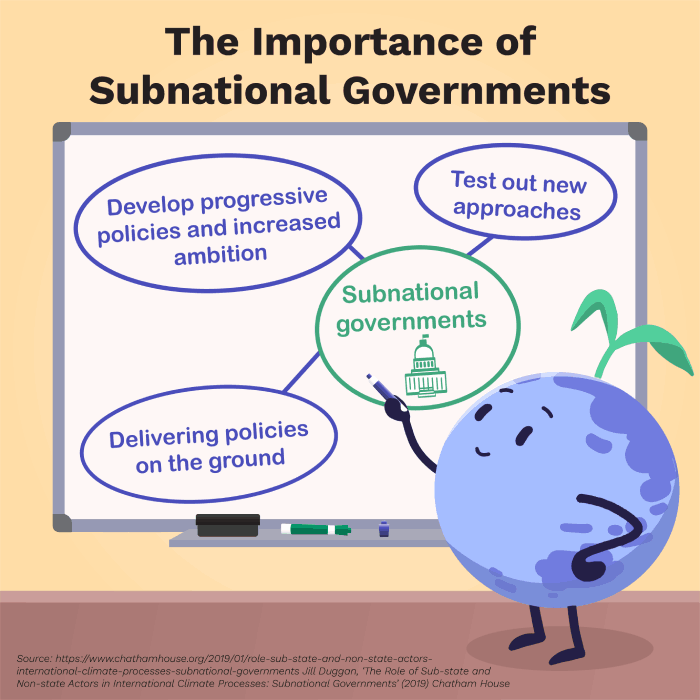
The Importance of Subnational Governments
Let’s look at an example.
In 1992, Mexico City in Mexico was considered the world’s most polluted city by the UN . But today, Mexico City has emerged as an environmental leader among cities in middle-income and low-income countries
.
It has also introduced a bike-sharing programme that has been replicated by other Latin American cities - this shows how even one city’s actions can have an international influence!
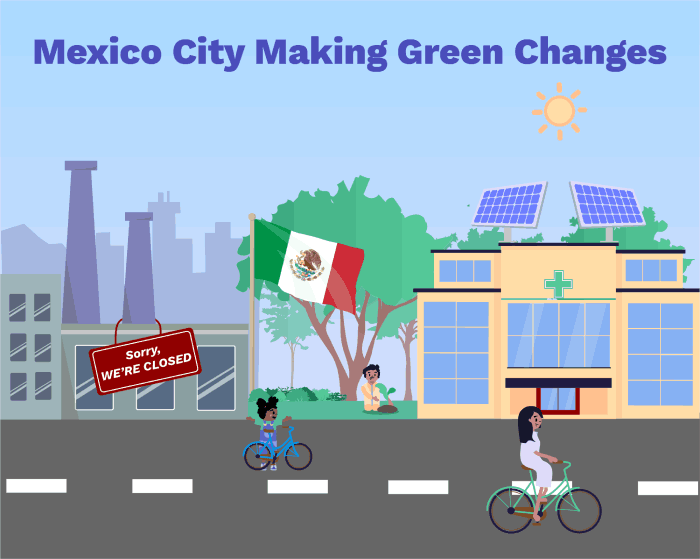
The changes taking place in Mexico City to reduce emissions
These measures have led Mexico City to reduce its carbon emissions by 7.7 million tonnes in 4 years (2008 to 2012) . Going forward, the city plans to plant 20 million trees, introduce zero emissions corridors for metrobuses, build a new clean energy transportation system and expand the use of solar energy in hospitals and public buildings
.
Can individuals influence global climate politics?
Individuals also get involved in global climate politics and we don’t just mean politicians!
While all of the individuals named above have had an important role in activism, it is Autumn Peltier who has specifically focused on the environment. Many activists can be quite young: for example, Autumn was only born in 2004 but has already made quite an impact!
Autumn is an Anishinaabe indigenous clean water advocate and climate activist who comes from the Wiikwemkoong First Nation on Manitoulin Island, Canada . In 2016, when she was only 12, Autumn criticised Justin Trudeau, the Prime Minister of Canada, for his clean water policies
. At a domestic level, this has helped to encourage change - since 2015, the Canadian Government has worked towards cleaning contaminated water for First Nations communities in Canada. However, more work still needs to be done as some people remain unable to drink water safely without boiling it first
.
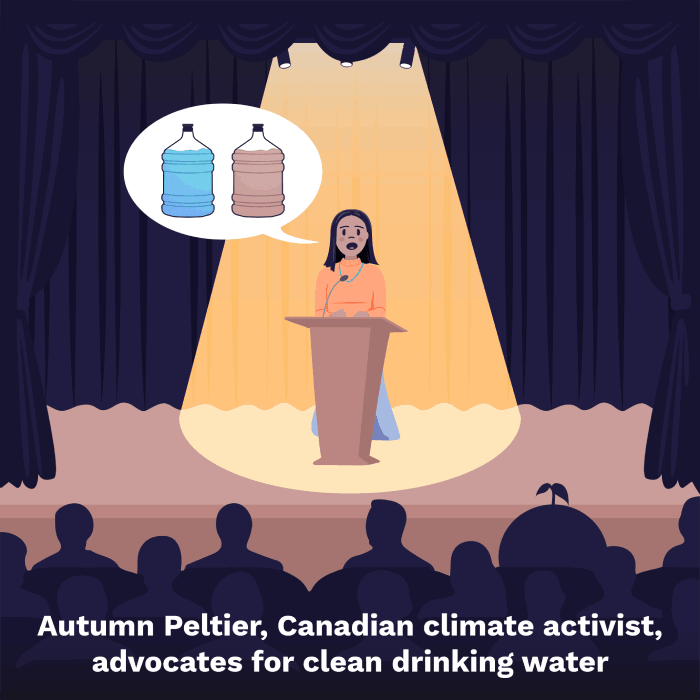
Autumn Peltier speaking at international events
Individuals do not always work alone - they often work together too!
For instance, people have come together to form protest movements, such as Fridays for Future. Fridays for Future is an international youth movement inspired by Greta Thunberg, another young climate activist . The movement has 3 key demands:
- To keep global temperature rise below 1.5°C compared to pre-industrial levels
- To ensure climate justice and equity
- we will learn about what this means in the last chapter of this course!
- To listen to the best science currently available
A key method used by Fridays for Future is school strikes, where children miss school to protest against inaction on climate change . Fridays for Future has been supported by scientists from around the world and has attracted substantial media attention
.
These sorts of initiatives do have an impact on people’s views: data suggests that global movements of civil disobedience (refusing to obey the government’s rules and demands in a non-violent way ) focused on climate change, including Fridays for Future and Extinction Rebellion, along with traditional scientific reports, may be important for increasing public awareness and engagement with climate change
.
How can public opinion influence global politics? Well, most experts agree that public opinion influences public policy and that stronger public opinion is likely to have a stronger influence on public policy !
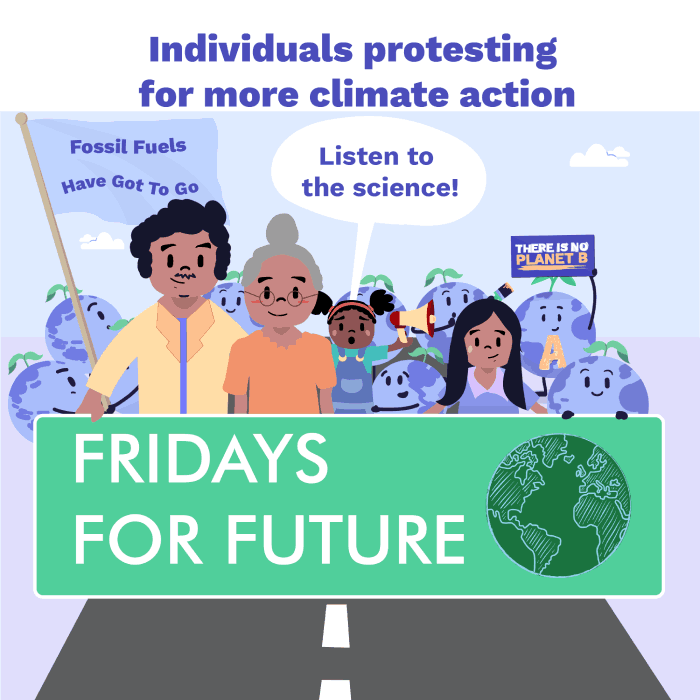
Individuals protesting for more climate action
Conclusion
From this chapter, we can see that while it is important that countries take action to reduce their emissions, many other players are also critical in helping to solve climate change through global climate politics. It really is a team effort!
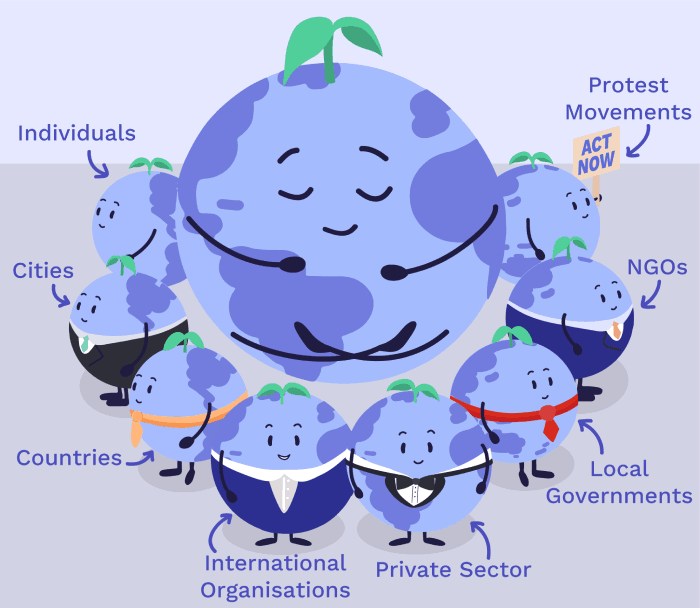
Global Climate Politics is a Team Effort!